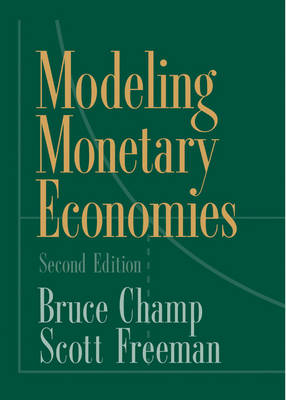
Modeling Monetary Economies
Seiten
2001
|
2nd Revised edition
Cambridge University Press (Verlag)
978-0-521-78974-5 (ISBN)
Cambridge University Press (Verlag)
978-0-521-78974-5 (ISBN)
- Titel erscheint in neuer Auflage
- Artikel merken
Zu diesem Artikel existiert eine Nachauflage
Uniquely among monetary textbooks, this text teaches monetary economics using a simple model based on standard microeconomics. The model is clearly and explicitly specified so that students see and participate in discovering the implications of the model for monetary questions.
This upper-level undergraduate textbook, now in its second editon, approaches monetary economics using the classical paradigm of rational agents in a market setting. Too often monetary economics has been taught as a collection of facts about existing institutions for students to memorize. By teaching from first principles, the authors aim to instruct students not only in existing monetary policies and institutions but also in what policies and institutions may or should exist in the future. The text builds on a simple, clear monetary model and applies this framework consistently to a wide variety of monetary questions. The authors have added in this second edition new material on speculative attacks on currencies, social security, currency boards, central banking alternatives, the payments system, and the Lucas model of price surprises. Discussions of many topics have been extended, presentations of data greatly expanded, and new exercises added.
This upper-level undergraduate textbook, now in its second editon, approaches monetary economics using the classical paradigm of rational agents in a market setting. Too often monetary economics has been taught as a collection of facts about existing institutions for students to memorize. By teaching from first principles, the authors aim to instruct students not only in existing monetary policies and institutions but also in what policies and institutions may or should exist in the future. The text builds on a simple, clear monetary model and applies this framework consistently to a wide variety of monetary questions. The authors have added in this second edition new material on speculative attacks on currencies, social security, currency boards, central banking alternatives, the payments system, and the Lucas model of price surprises. Discussions of many topics have been extended, presentations of data greatly expanded, and new exercises added.
Preface; Part I. Money: 1. A simple model of money; 2. Barter and commodity money; 3. Inflation; 4. International monetary systems; 5. Price surprises; Part II. Banking: 6. Capital; 7. Liquidity and financial intermediation; 8. Central banking and the money supply; 9. Money stock fluctuations; 10. Fully backed central bank money; 11. The payments system; 12. Bank risk; Part III. Government Debt: 13. Deficits and the national debt; 14. Savings and investment; 15. The effect of the National Debt on capital and savings; 16.The temptation of inflation; References; Index.
| Erscheint lt. Verlag | 15.1.2001 |
|---|---|
| Zusatzinfo | 13 Tables, unspecified; 79 Line drawings, unspecified |
| Verlagsort | Cambridge |
| Sprache | englisch |
| Maße | 181 x 256 mm |
| Gewicht | 604 g |
| Themenwelt | Wirtschaft ► Betriebswirtschaft / Management ► Finanzierung |
| Betriebswirtschaft / Management ► Spezielle Betriebswirtschaftslehre ► Bankbetriebslehre | |
| Wirtschaft ► Volkswirtschaftslehre ► Finanzwissenschaft | |
| ISBN-10 | 0-521-78974-5 / 0521789745 |
| ISBN-13 | 978-0-521-78974-5 / 9780521789745 |
| Zustand | Neuware |
| Haben Sie eine Frage zum Produkt? |
Mehr entdecken
aus dem Bereich
aus dem Bereich
warum unser Geld stirbt und wie Sie davon profitieren
Buch | Hardcover (2024)
FinanzBuch (Verlag)
CHF 41,95
denken und handeln wie ein professioneller Trader
Buch | Softcover (2023)
Vahlen, Franz (Verlag)
CHF 51,65



